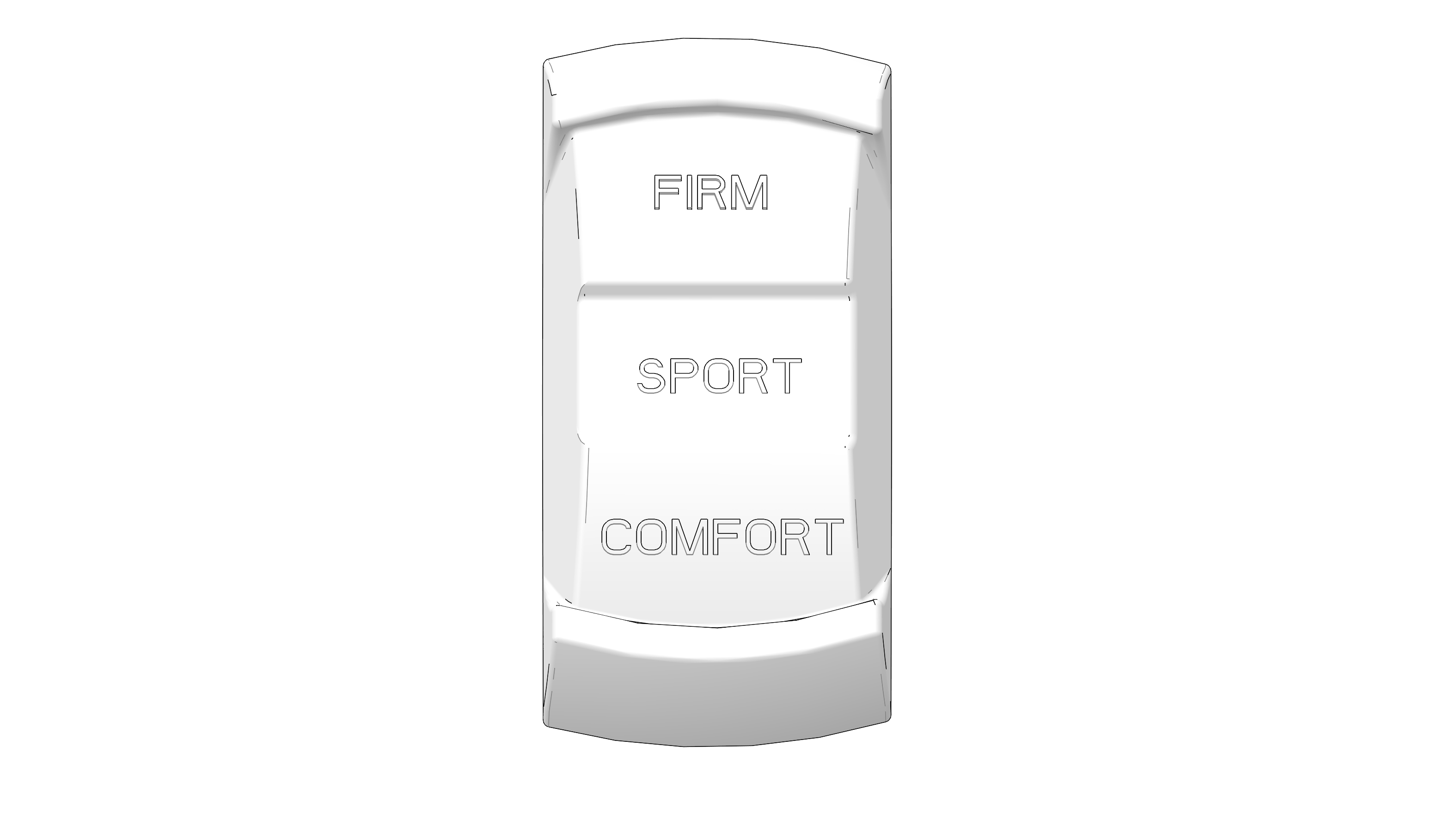Suspension Mode Switch (if equipped)
The RZR XP Turbo S and RZR XP 4 Turbo S are equipped with a suspension control mode switch that allows you to change the suspension control mode of your DYNAMIX Active Suspension system on-the-fly. (The Turbo S Velocity is not equipped with the DYNAMIX Active Suspension system.) There are 3 available suspension modes to select from: Firm, Sport, and Comfort.

In Firm Mode, the suspension reverts to its most firm compression damping setting. This mode is recommended for challenging terrain where large suspension events and complex terrain is encountered. In this mode, all 4 shocks are at the most firm setting.
In Sport Mode, some level of rider comfort is traded for higher performance levels and reduced body motion. Damping ramps up more aggressively as a function of vehicle speed. This mode is recommended for spirited driving where additional suspension system performance is required. All semi-active features are enabled in this mode.
In Comfort mode, the suspension control system is optimized for rider comfort, intervening in performance situations where required. The system will gradually increase the base value of damping as vehicle speed increases. Cornering, braking, acceleration, and airborne detection algorithms are fully active.